Mountain bike suspensions are highly technical components, subject to heavy use in the field. Regular maintenance of your suspensions is essential to ensure their long-term performance. This will not only ensure your comfort and safety, but also your riding sensations.
Choosing the right suspension oil is an essential first step in maintaining your fork and shock absorber. This oil, which will be used to drain your suspension's hydraulics, must comply with the manufacturer's recommendations.
Why change your MTB suspension oil regularly?
L'suspension oil is essential for the proper operation of mountain bike forks and shock absorbers. It must be renewed regularly to maintain a constant level of performance.
The role of oil in MTB suspension operation
It's important to understand that the operation of forks and shock absorbers of mountain bikes is based on 2 main elements: a spring a(air or coil) and a damping system b(hydraulic). The purpose of the damping system is to control and compensate for the action of the spring, so that the bike doesn't bounce back every time it touches the ground.

MTB suspension damping is always managed by a hydraulic system. A fork uses an open or closed cartridge (usually on the right-hand side). For rear suspension, the hydraulic system is integrated into the shock absorber body, or partially offset in a piggy-back reservoir. Hydraulic shock absorbers work by circulating oil through a piston. This fluid is called laminating oil or operating oil. As the fluid wears down, it loses some of its qualities, ultimately affecting the suspension's performance.
MTB suspensions also need a special lubricating oil to facilitate the sliding movement. This lubricating oil is found inside the forks and inside the air chamber (shock absorber). This oil helps protect the various components from wear (plungers, seals, etc.).
Changing suspension oil
L'suspension oil plays a fundamental role in the smooth operation of your shock absorber or mountain bike fork. A quality oil allows you to exploit your suspension's full potential and maintain its original sensitivity. Conversely, worn oil weakens the suspension's hold in the compression/expansion phase and compromises the precision of adjustments.
In the case of forks, if you don't take care to clean the plungers and replace the lubricating oil regularly, the forks may dry out and accumulate dirt inside. These deposits can scratch or even sand down the plungers, causing leaks. As with shock absorbers, lubricating oil and seals must be changed regularly.
Complete suspension maintenance includes parts cleaning, draining the lubricating oilrenewal of seals and bleeding the hydraulic damping system.
Respecting maintenance intervals is all the more important for suspensions MTB suspensions, as they use advanced technology and parts that are highly sensitive to wear. The cost of repairs if maintenance is neglected is much higher.
To avoid this, we advise you to scrupulously follow the manufacturers' recommendations concerning the frequency of maintenance of mountain bike forks and shocks.
You can also follow our advice on mountain bike fork maintenanceor call on our technical advisors.
MTB fork and shock absorber oil: how often should I change it?
Instructions vary from one manufacturer to another. Note that intensive use in difficult conditions (dust, humidity, mud) encourages dirt to penetrate your suspensions. Depending on the intensity of your riding, you may want to consider moving maintenance operations closer together or further apart.
We recommend the following schedule for general fork maintenance:
|
Lubricating oil change for forks |
Complete oil change for forks |
Lubricating oil change for shock absorber |
Complete oil change for shock absorber |
|
|---|---|---|---|---|
| Fox Racing Shox | 30 H | 125 H or 1 time/year | / | 125 H or 1 time/year |
| Rock Shox | 50 H | 100 H | / | 100 H to 200 H |
| Marzocchi | / | 50 to 100 H | / | 125 H |
| BOS | / | 100 H or 1 time/year | / | 100 H or 1 time/year |
| SR Suntour | 50 H | 100 H or 1 time/year | / | 100 H or 1 time/year |
| Formula | 30 H or 6 months | 100 H or 1 time/year | / | 200 H or 1 time/year |
| Manitou | 50 H | 200 H or 1 time/year | / | 200 H or 1 time/year |
| DVO | 50 H | 100 H | / | 100 H to 150 H or 1 time/year |
Probikeshop tip: The complete overhaul, including draining the hydraulics, is a fairly heavy operation. We suggest you leave it to a professional.
MTB suspension oil: which viscosity to choose?
ATV suspension oil is classified according to its viscosity. You'll find the following values: 2.5WT / 3WT / 4WT / 5WT / 7WT / 7.5WT / 10WT / 15WT / 20WT / 30WT.
If the viscosity grade is low, the oil is fluid and your damping system more sensitive to the terrain. An oil with a higher viscosity grade is more consistent: it corresponds to a harder-to-trigger damping system. If you're an experienced Enduro/DH rider, a higher viscosity level seems more appropriate. On the other hand, a low-viscosity oil is more interesting if you're a more occasional recreational rider and you're looking for comfort and sensitivity.
You can adapt the type of oil to your riding style and riding style, but it's best to follow the manufacturer's recommendations. Please note that any modification not recommended by the manufacturer will invalidate the warranty.
The type of oil compatible with your suspension model is easy to find in your service manual and on the manufacturer's website. Brands may specify the volumes required for each operation (right/left sleeve bleeding, hydraulic draining).
Découvrez tous nos conseils & Tutoriels
ACCESSORIES - Suspension Oil
-
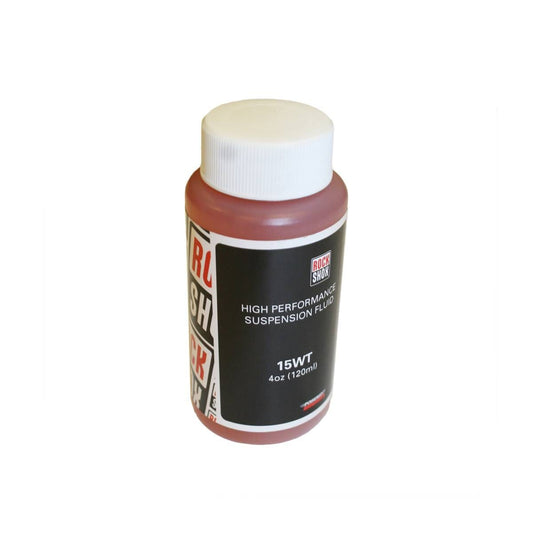
ROCKSHOX 15 WT Suspension Oil (120 ml)
Regular price 4,99 €Regular priceUnit price per -
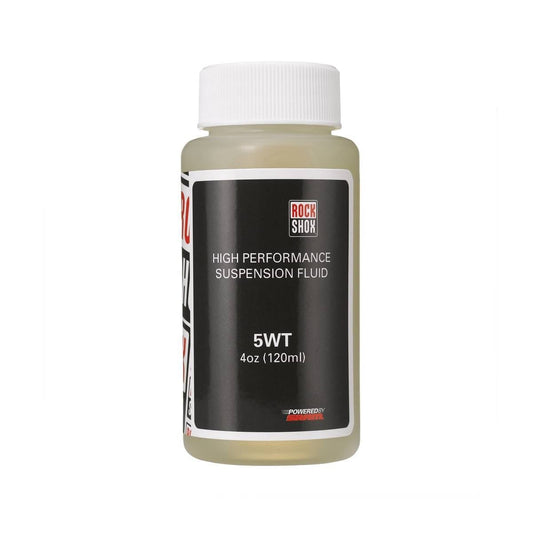
ROCKSHOX 5 WT Suspension Oil (120 ml)
Regular price 3,99 €Regular priceUnit price per -
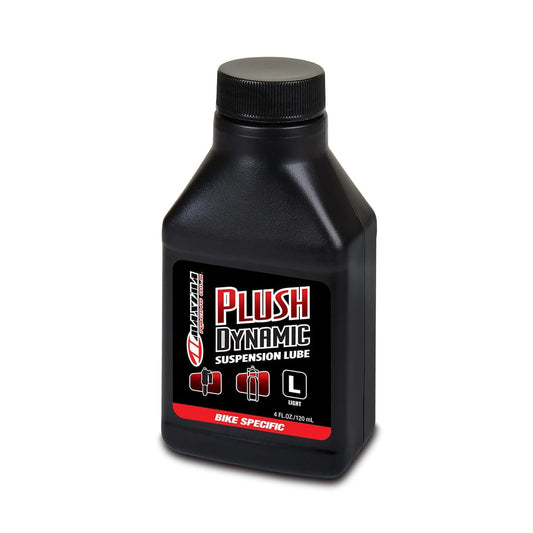
ROCKSHOX Maxima Plush Dynamic Light Suspension Oil (120ml)
Regular price 7,90 €Regular priceUnit price per -
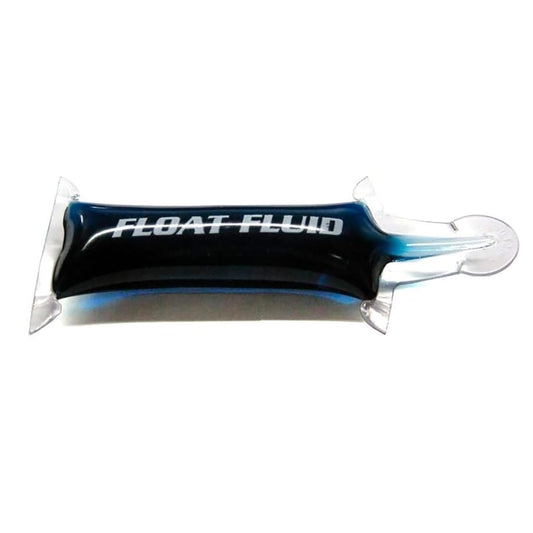
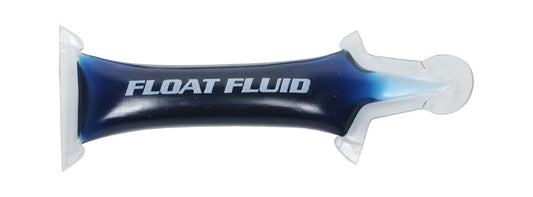
Oil for FOX RACING SHOX FLOAT FLUID 5CC forks (1 fork)
Regular price 6,99 €Regular priceUnit price per -
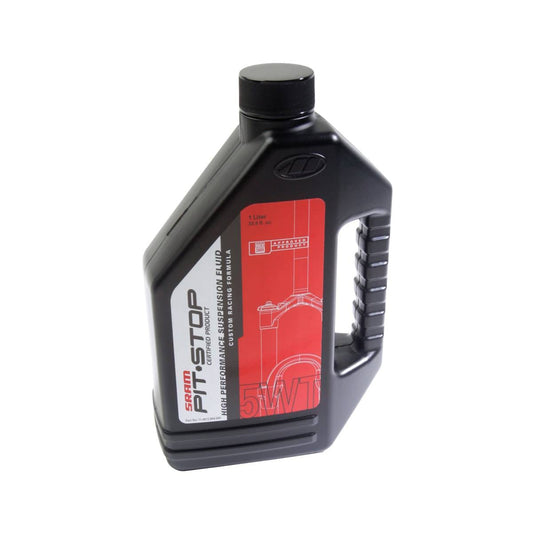
ROCKSHOX 5 WT Suspension Oil (1 L)
Regular price 18,99 €Regular priceUnit price per -
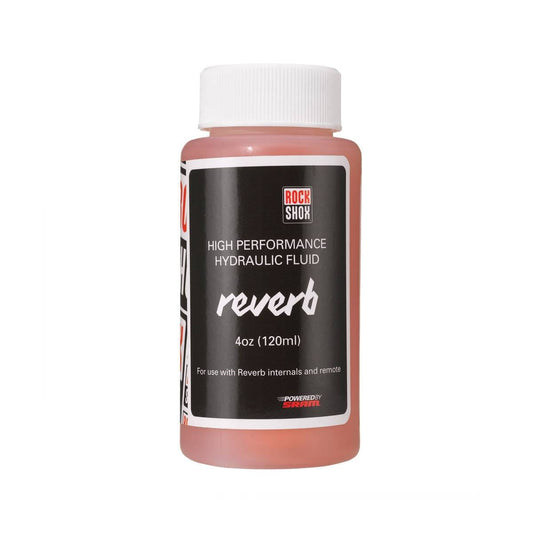
SRAM PITSTOP / REVERB / XLOC 2.5 WT Suspension Oil (120 ml)
Regular price 4,99 €Regular priceUnit price per -
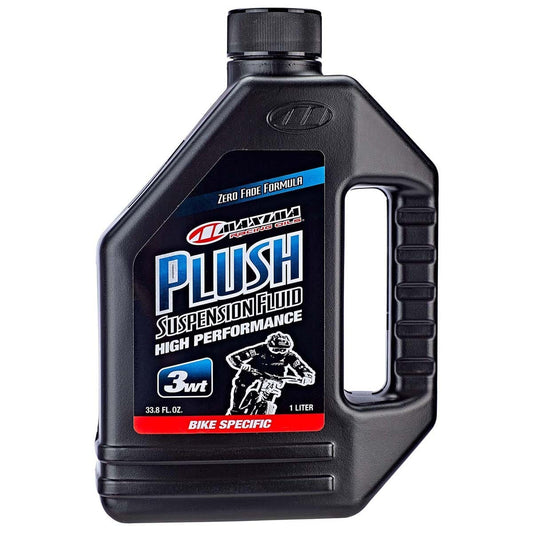
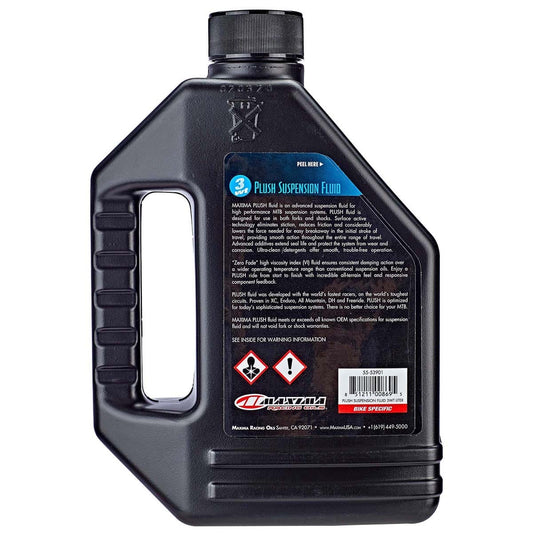
ROCKSHOX MAXIMA PLUSH 3WT Rear Suspension Oil (1 L)
Regular price 18,99 €Regular priceUnit price per -
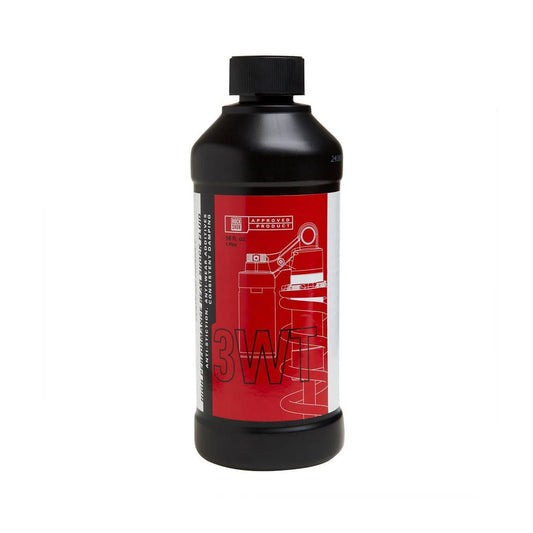
ROCKSHOX 3 WT Shock Absorber Oil (120 ml)
Regular price 3,99 €Regular priceUnit price per










